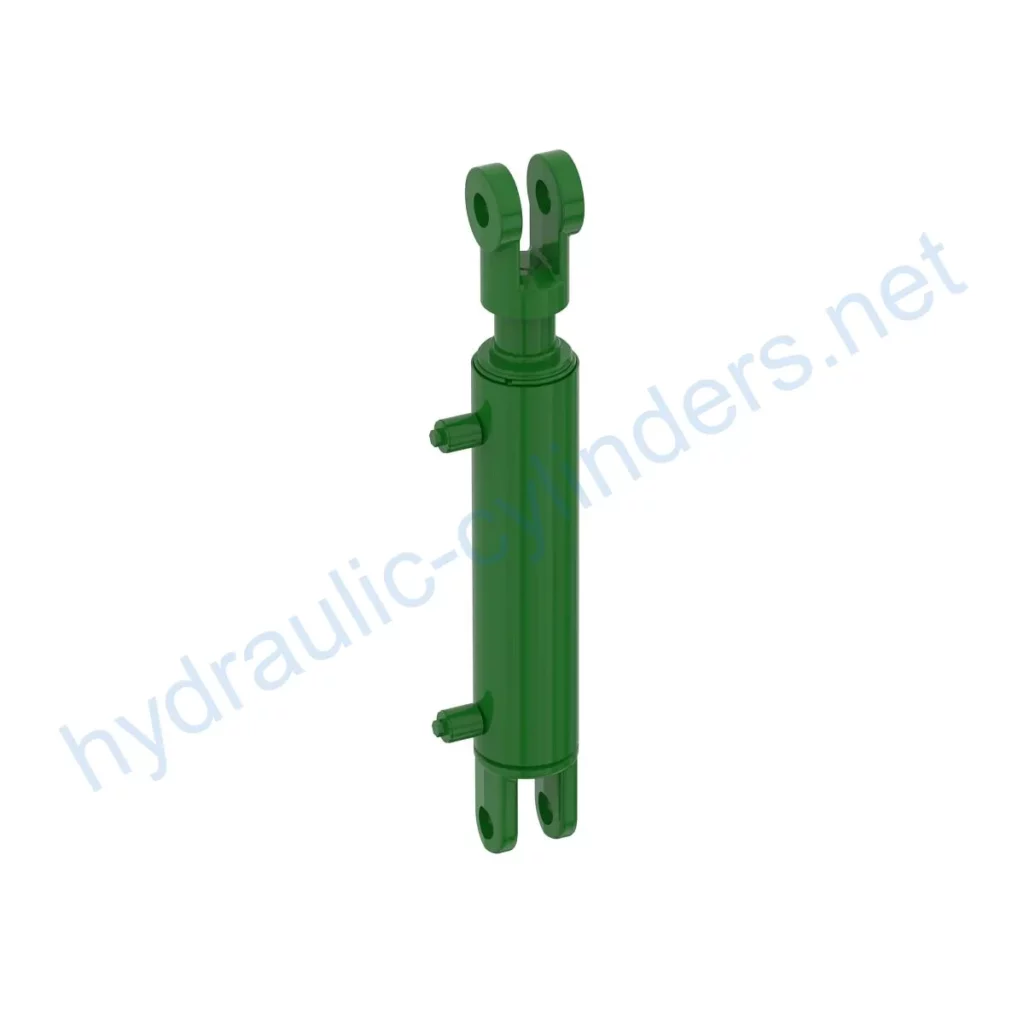Introduction
The Replacement Of AHC18574 Hydraulic Cylinder is a vital component used in various machinery, including models 1895 N530C, N536C, N540C, N542C, and N560F. This hydraulic cylinder plays a crucial role in ensuring the smooth operation of equipment. With a weight of 26 lb and dimensions of 3.3 in (height), 4.5 in (width), and 22.5 in (length), it is designed to meet the highest standards of performance and durability.
Specifications and Models
Weight: 26 lb
Height: 3.3 in
Width: 4.5 in
Length: 22.5 in
Compatible Models:
- 1895 N530C
- 1895 N536C
- 1895 N540C
- 1895 N542C
- 1895 N560F
Features
- Improved Equipment Performance: Replacing damaged or worn hydraulic cylinders can restore the equipment’s normal operational capabilities, ensuring optimal performance in various applications.
- Enhanced Safety: Regularly replacing hydraulic cylinders reduces the safety hazards caused by cylinder failures, ensuring the safety of both operators and equipment.
- Overload Protection: The design of new cylinders often includes better overload protection mechanisms, enhancing safety during operation.
- Quick Installation: Modern hydraulic cylinders are designed for easy installation and replacement, minimizing downtime.
- Standardized Components: Many hydraulic cylinders are standardized, making it easier to obtain replacement parts in the market.
Applications
The Replacement Of AHC18574 Hydraulic Cylinder finds its applications in various scenarios:
Excavator
In excavators, the hydraulic cylinder may get damaged due to prolonged use or overload in the arm or bucket. Replacing it is essential to restore normal operation.
Crane
The hydraulic cylinder in a crane’s lifting arm is prone to wear and tear during frequent lifting and lowering operations. Regular replacement ensures safety.
Tractor
The hydraulic cylinder in a tractor’s front-end loader may develop leaks or reduced performance due to continuous lifting and tilting operations. Replacement is necessary in such cases.
Harvester
During harvesting, hydraulic systems endure high pressure, and cylinders may get damaged due to fatigue. Timely replacement is crucial to maintain work efficiency.
Automated Production Line
Hydraulic cylinders are used to control robotic arms and other automated equipment in production lines. Immediate replacement is necessary in case of cylinder failure to avoid production delays.
Die Casting Machine
Hydraulic cylinders in die casting machines may experience performance degradation in high-pressure and high-temperature environments. Regular replacement ensures product quality.
Mining Equipment
Hydraulic cylinders are used in mining equipment for lifting and moving heavy loads. They require regular inspection and replacement to prevent equipment failure in harsh working conditions.
Bulldozer
In bulldozers, the wear of hydraulic cylinders on the dozer blade can lead to a decrease in pushing ability. Timely replacement is necessary to maintain operational efficiency.
Maintenance Tasks
Regular maintenance tasks for hydraulic cylinders include:
1. Inspection
Regularly inspecting the cylinder for leaks, damage, and signs of wear is essential to identify potential issues.
2. Lubrication
Proper lubrication ensures smooth operation and prevents premature wear of the cylinder. Use recommended hydraulic oil and follow lubrication guidelines.
3. Seal Replacement and Calibration Checks
Replacing worn seals and performing calibration checks ensures optimal performance and prevents leaks. Follow proper alignment instructions during installation and consider using suitable installation brackets to secure the cylinder.
Safety Considerations and Environmental Factors
When using hydraulic cylinders, it is crucial to prioritize safety measures. Proper handling, regular maintenance, and adherence to safety protocols are essential to prevent accidents and ensure safe operation. Additionally, considering environmental factors, such as using environmentally friendly hydraulic oils, helps minimize the impact on the ecosystem.
Troubleshooting and Common Issues
Common hydraulic cylinder issues include leaks, insufficient force, and erratic movements. Here are some troubleshooting tips and solutions:
Problem: Leakage
Possible Solution: Check and replace damaged seals or connections. Ensure proper installation and tighten fittings.
Problem: Insufficient Force
Possible Solution: Check for low hydraulic fluid levels, clogged filters, or worn-out components. Refill or replace as necessary.
Problem: Erratic Movements
Possible Solution: Inspect for damaged valves, contaminated fluid, or air in the system. Repair or bleed the system accordingly.
Preventive measures such as regular inspections, proper maintenance, and following recommended operating practices can help minimize potential issues and ensure optimal performance.
Design Considerations and Selection Criteria
When designing hydraulic cylinders, several factors come into play:
1. Load-Bearing Capacity
The cylinders’ load-bearing capacity should meet the specific requirements of the machinery to ensure safe and efficient operation.
2. Sealing, Durability, and Safety
Adequate sealing, durability, and safety features are essential to withstand challenging environments and prevent leaks or failures.
3. Maintenance and Repair
Ease of maintenance and repair should be considered, allowing for quick and efficient servicing and minimizing downtime.
Sealing and Lubrication
Hydraulic cylinders incorporate various sealing elements, such as piston seals and rod seals, made of wear-resistant materials like polyurethane and nitrile rubber. Furthermore, the cylinder body and threaded ends undergo meticulous surface treatment to enhance wear resistance. Regular lubrication with the appropriate amount of hydraulic oil ensures smooth operation and extends the cylinder’s lifespan.
Periodic Inspection and Preventive Maintenance
For optimal performance and longevity, the following maintenance measures are recommended:
1. Proper Installation
Ensure correct alignment during installation and follow the provided guidelines for securing the cylinder. Incorrect installation can lead to premature wear and other issues.
2. Lubrication and Adjustment
Timely lubrication and adjustment of the cylinder play a vital role in maintaining its performance. Follow the recommended lubrication intervals and use the proper type of hydraulic oil.
3. Inspection, Repair, and Replacement
Regularly inspect the cylinder for signs of wear, leaks, or damage. Implement a repair or replacement strategy based on the findings. Timely replacement

